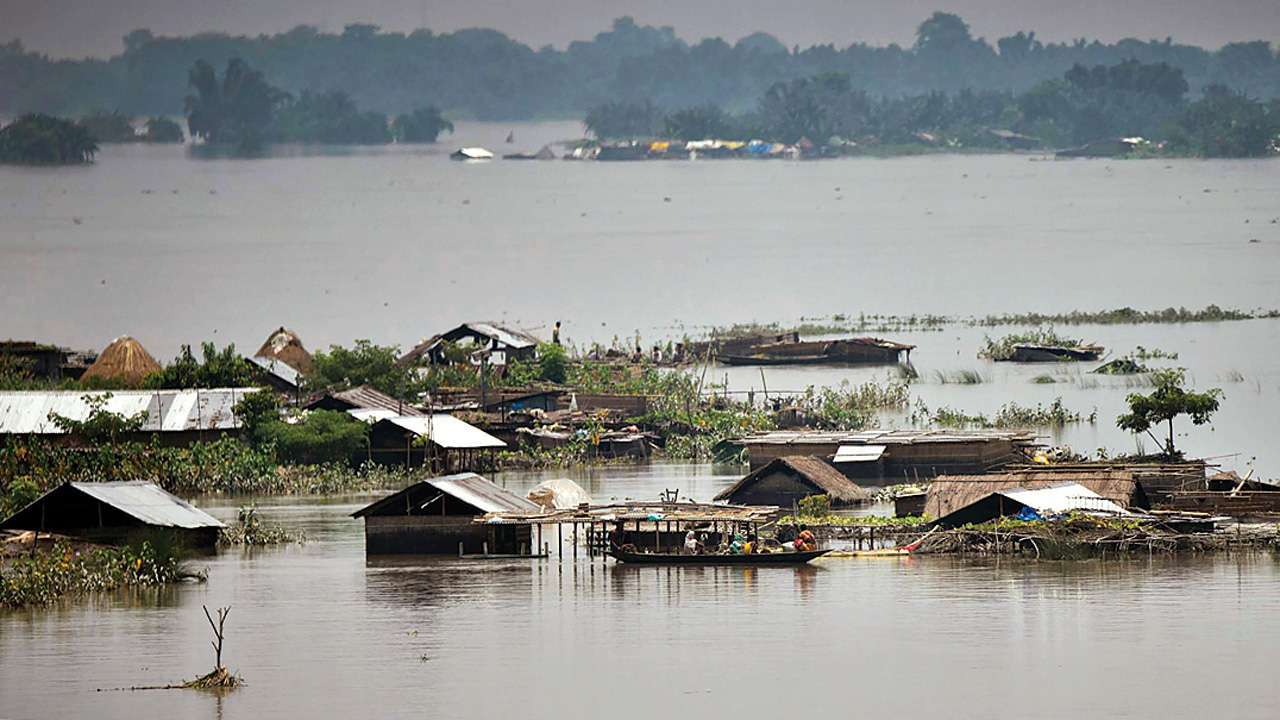Assam flood :
Why assam faces flood every year?
Assam is one of the most flood-prone states in India and it has almost become an annual calamity. In terms of impact on human lives, the floods of 1988, 1998 and 2004 were the worst – the 2004 floods alone affected 12.4 million people and claimed 251 lives. According to the Assam government, the flood-prone area of the state is 31.05 lakh hectares, against a total area of 78.523 lakh hectares – this means nearly 40% of the state’s area is flood-prone. Overall, Assam accounts for nearly 10% of the total flood-prone area of the country.
Floods wreak havoc in Assam every year, and this year has been no different. This year, floods caused by three long and heavy spells of rain since March have claimed 157 lives so far. Although the situation in the State has improved over the last week, the damage to life and property has been enormous. There are thousands of people who, having lost their homes, are still living in relief camps.
Topography plays a major role. Because most of the rivers flow downstream in the State, they do so with so much force, especially during incessant rainfall, that breaches in embankments are all too common. There are also human-induced problems like destruction of wetlands, deforestation, and encroachments on river banks. Most cities and towns suffer due to poor planning.
Both Brahmaputra and Barak, along with their tributaries, were flowing above danger levels at some point during the monsoon season. Dhansiri, Jia Bharali and Kushiyara, a Barak tributary, continue to flow above danger level. Rainfall in upstream also contributes to flooding, as the water flow increases downstream. China shares water flow information of the Brahmaputra and Sutlej rivers with India during monsoon as a part of bilateral ties. The hydrological data helps understanding water level downstream.
In 1982, the Brahmaputra Board suggested that dams and reservoirs be built to mitigate floods in Assam. While dams are meant to regulate the flow of water, they can also be beyond the capacity of the channels downstream, proving to be a double-edged sword. The Water Resources Department of Assam has constructed embankments and flood walls across the state. River training, bank protection, anti-erosion and town protection are also in the works.
Rivers in Assam, including the Brahmaputra, are embanked in places. During the monsoon, the Assam State Disaster Management Authority (ASDMA) and NGOs identify dry lands in upper regions and organise shelter for people living in low-lying areas. Those affected often take shelter in schools, which remain shut till the situation improves. According to ASDMA, it has run 954 relief camps providing shelter to a total of 4,51,846 people this year. However, many people have to help themselves during flood and find a safe place to live during the floods.
The Water Resource Department in Assam submitted a flood memorandum to the Centre in 2016 following the flood seeking an ₹5038.00 crore for repairing embankments, flood control structures and repairing of damages to river banks, the department said to The Hindu. This year, the State government has allocated ₹2,723.34 crore to the water resource department.
According to Himanshu Thakkar, an IIT graduate and water activist who is a coordinator of the South Asia Network on Dams, Rivers and People, it is "not possible to flood-proof the whole of Assam." However, here are a few measures that can be followed:
I) Rejuvenation of wetlands,
II) Reconstruction of embankments,
III) Decentralised weather forecast.



0 Comments